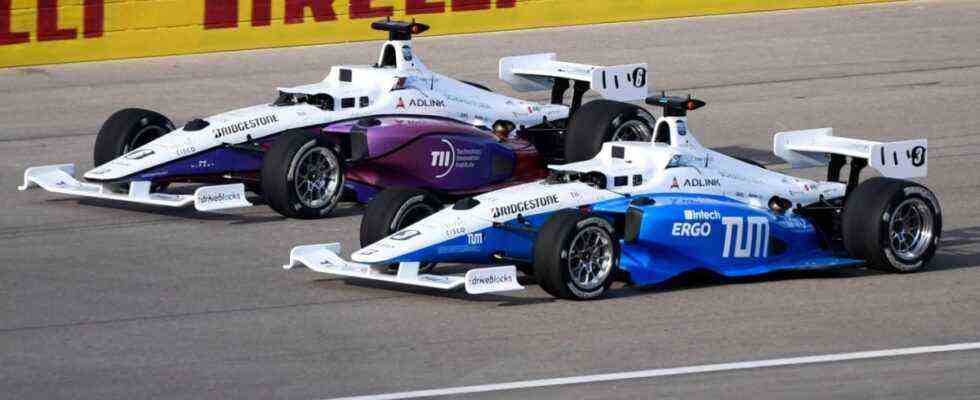In their “Autonomous Motorsport” team, doctoral students and students from the Technical University of Munich are working on software that can safely steer a racing car without a driver at top speed over a track. At the beginning of the year, the TU team took part in the “Autonomous Challenge” in Las Vegas, the first such autonomous car race in which two racing cars drove together on the track, and achieved second place. Team leader Phillip Karle, PhD student at the Chair of Automotive Engineering, on the future of driving with artificial intelligence and the challenges of desert sands.
SZ: Mr. Karle, congratulations on the good performance of your team. Of the five varsity teams that competed in Las Vegas, they made it to the finals.
Phillip Karle: Thank you. The Motor Speedway in Las Vegas was a great stage and we are absolutely delighted with the result. Placement is one thing (TU had won the previous race in October 2021 in Indianapolis, editor’s note.), but we’ve made great strides in our software since Indianapolis.
Phillip Karle (centre) is cheering on the edge of the piste with his colleagues from the TU in Garching at the race in Las Vegas.
(Photo: Jacob Kepler/oh/TU Munich)
It was the first time that racing cars controlled solely by an artificial intelligence had driven against each other in a direct duel at such high speeds. What’s so challenging about that?
The main challenge in this race was the short development time. Think of a novice driver – it usually takes a person years to gain experience and become a good driver. We only had three weeks to prepare on site with the race car. Until then, we worked with simulations in Garching. But the real conditions on the race track are different again. For example, depending on the position of the sun, you have an imprecise object perception – as with humans when the sun is dazzling; the cross wind comes unprepared in reality. At one point we also had desert sand on the track that impeded our lasers.
How can one imagine the artificial intelligence that controls the car?
Each team works with the same type of racing car, a Dallara AV-21. Instead of a driver, there is a computer in the cockpit, so to speak. Each team develops its own algorithms and uploads them to the computer. We work with laser and radar sensors to perceive our surroundings and we use GPS for localization. During the race, our car drove all by itself, including constantly updated predictions of how another object – in this case the competitor’s car – would behave, and then adjusting our own actions. At speeds of up to 270 kilometers per hour, it was also a challenge to keep the car stable. All in all, we can say that we have reached a new level of autonomous racing.
How can your results be transferred from the race track to road traffic?
That’s the exciting question. On the racetrack we had to master a very compressed, demanding journey. We have developed very general software for this, which also works for other routes and use cases. Some of the team members around my predecessor Alexander Wischnewski have just founded a start-up, a software company called Driveblocks, which is aimed at the logistics sector. The basic task will be that the software that controls a vehicle makes predictions that are as reliable as possible and has the shortest possible response time. We want to test this at the TU in our new project in a real situation: We are developing an autonomously driving people mover, the “Wiesn-Shuttle”, which we want to use during the Oktoberfest in the entrance area at the Bavariaring. If the people mover manages to maneuver through the crowd, some of whom are under the influence of alcohol, he can also drive through a normal pedestrian zone.

